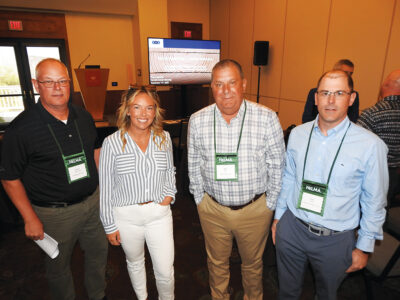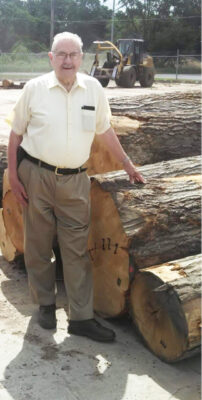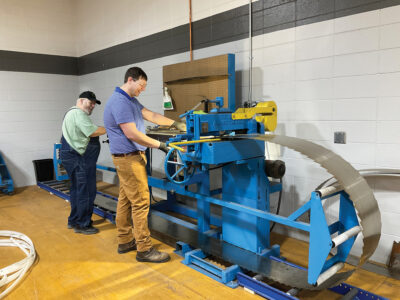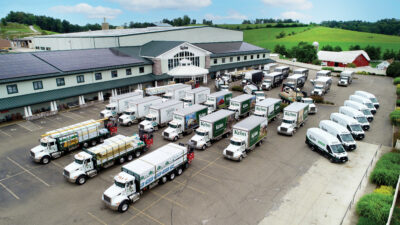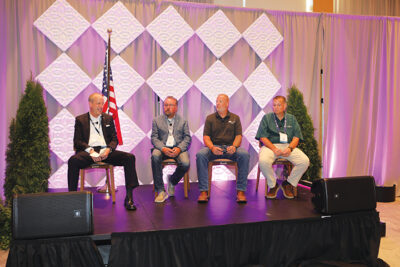By: Robert Glowinski, President & CEO of the American Wood Council
As you’re most likely aware as a reader of The Softwood Forest Products Buyer, the 2021 I-codes (the family of model building codes in the United States) are scheduled to be released in early October 2020 and will include fire and life safety regulations for tall mass timber buildings. Although mass timber had already been approved to be built up to six stories in the 2015 edition, this release will cap off years of work from the American Wood Council (AWC) and the engineering and code community on researching mass timber, developing code change proposals, and now, incorporating new construction types within the 2021 International Building Code (IBC) up to 18 stories.
The number of tall mass timber buildings in the United States is already quickly rising. The tallest tall mass timber building in North America continues to be the 18-story Brock Commons university dormitory in Vancouver, British Columbia. The tallest CLT building in the United States is the 8-story Carbon 12 condominium building in Portland, OR. The T3 building in Minneapolis is a 7-story office building constructed with nail-laminated timber.
Given the anticipated demand by states and municipalities across the country for taller mass timber buildings, the building safety community needs comprehensive explanations of the new regulations contained in the 2021 IBC. To address that, AWC joined with the International Code Council (ICC) to develop a new publication for just that purpose.

The new AWC-ICC Mass Timber Buildings in the IBC® is now available on the ICC website and will soon be available for purchase through the ICC publication store. It will be invaluable in instructor-led programs educating on mass timber and new, tall mass timber design and construction.
The publication is divided into eight parts, which cover:
- Administration: inspection provisions and definitions.
- Building Planning: special detailed requirements based on occupancy and use, heights and areas and types of construction.
- Fire Protection: provisions on fire and smoke prevention, fire-resistance ratings, interior finishes and life safety systems.
- Means of Egress and Elevators: egress and elevator hoistway provisions.
- Building Envelope, Structural Systems and Construction Materials: provisions in sound transmission, roof assemblies, structural loads, special inspections and more.
- Special Conditions: requirements for precautions during construction contained in the IBC and the International Fire Code (IFC).
- IBC Reference Standards and Appendix D: explanation of PRG 320 and a minor change for Fire Limits.
- Appendices A, B, and C: Environmental consideration, additional technical resources not referenced in the code and quiz questions for test preparation.
Each chapter begins with a summary of the change that occurred to the code, the exact text added to the section of the code in strikeout and underline format and the significance of the code change on topic being discussed. Each chapter also addresses specific IBC chapters where mass timber construction is applicable and may include provisions from the 2015, 2018 and 2021 IBC, the 2021 International Fire Code or the 2021 International Energy Conservation Code®.
With three new types of construction being introduced in the new building code, Types IV-A, IV-B and IV-C, mass timber buildings provide an alternative to less environmentally-friendly materials for tall buildings. Lower embodied energy from the manufacturing process combined with sequestration of atmospheric carbon in the wood makes mass timber a very viable option for reducing a building’s impact on the environment.
Oregon, Washington, Utah and the city of Denver have already taken steps to permit the construction of tall mass timber buildings that comply with approved ICC code changes, before the 2021 code is even available. Things are looking UP for mass timber and AWC expects more and more tall mass timber buildings will be planned and its use in the United States expanded with code provisions written into the coming 2021 IBC. This new joint publication from AWC and ICC will help ensure those projects come to fruition smoothly.
To learn more, visit www.awc.org/tallwood.



